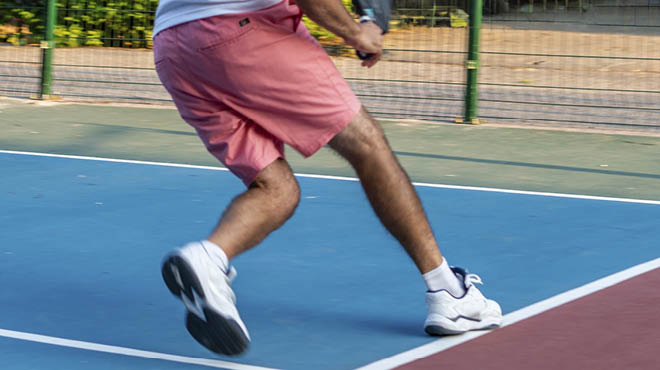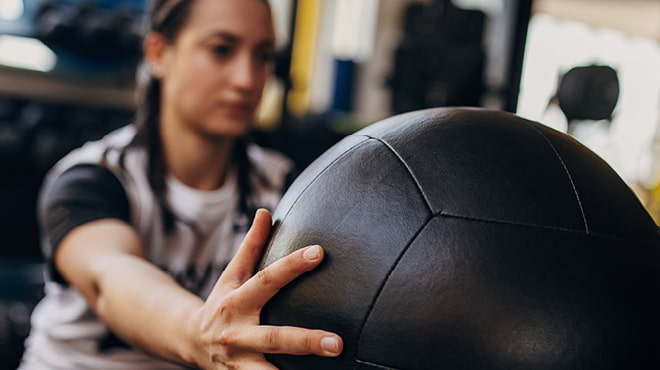Recent Posts
What's going on with my kneecap?

If your kneecap pops or slides to the outside of your knee, you'll definitely know that something's going on. Typically, that "something" is a partial or full dislocation, which means the kneecap, also known as the patella, has slipped partly or all the way out of its groove over the knee joint.
Dislocation can be caused by a sudden blow, such as taking a hard hit playing a contact sport like football or hockey, or by a chronic condition like a stretched ligament. Some people have a particular knee anatomy that makes it more common. In those cases, a dislocation could be caused by something as simple as normal walking or standing up from a chair. With chronic dislocation, it may feel as though your knee is buckling or giving way. There's often no pattern or regular causes of the dislocations.
What happens when a kneecap dislocates
When the kneecap dislocates, it's painful and the knee area may swell. Whether it happens from an acute or chronic situation, dislocation can damage the cartilage of the groove that the kneecap sits in or the cartilage underneath the kneecap.
Acute or chronic dislocation indicates you have a stretched or torn medial patellofemoral ligament, or MPFL, a tough band of tissue that connects to the inside of the kneecap and prevents it from sliding to the outside of the knee.
Treating acute dislocation
If the dislocation is caused by an acute injury, you may be able to ease the kneecap back into place, or you may need to go an emergency department where health care professionals can correct the dislocation and evaluate if there's additional injury to your knee. Following the dislocation, you should see an orthopedic specialist.
An X-ray provides an overall view of the anatomy of the kneecap and knee joint. The orthopedic specialist can determine if there is damage to the groove the kneecap rests in, how high the kneecap sits above the joint and if the patellar tendon, which connects below the kneecap, is pulling to one side.
If this is the first time your kneecap has dislocated, the X-ray also can help determine if you're at risk of it happening again. Your orthopedic specialist also may order an MRI to check if a piece of the cartilage has broken off.
Younger patients may need to undergo surgery to remove or fix a cartilage piece that has broken off and reconstruct the MPFL. Recovery following surgery typically involves wearing a brace, physical therapy and limited weight bearing to give the cartilage the best chance to heal. It may take up to six months before you're able to fully return to sports.
For older patients, cartilage is less likely to heal, so surgery isn't always recommended. However, if you're experiencing a catching sensation in your knee, an orthopedic surgeon may decide to surgically remove the piece of cartilage. Rehabilitation will include limited weight bearing, using a brace and physical therapy.
Treating chronic dislocation
The first time your knee dislocates — unrelated to an injury — it may slide back into place on its own. However, you should see an orthopedic specialist who can evaluate if there has been any injury to the cartilage and determine your risk for dislocations happening again. If there isn't any cartilage damage, the orthopedic specialist may order physical therapy to strengthen your hip and quadricep muscles. This can help overcome any stretch in the MPFL ligament and stabilize your kneecap, as well as decrease the risk of arthritis over time.
However, you eventually still may require surgery to reconstruct the MPFL, as well as other procedures to correct chronic dislocations. These include deepening the groove where the kneecap sits or moving the location where the patellar tendon connects.
Recovery from MPFL reconstruction may take several months before you're able to return to normal activities and regain your range of motion. Overall recovery for more complex surgeries may take four to six months.
Preventing kneecap dislocations
The best way to lessen your chance of acute and chronic kneecap dislocations is to maintain overall leg, quadricep and hip strength. For chronic dislocations, learn what tends to cause them, such as twisting, and avoid those motions. A physical therapist also can teach you how to correct a kneecap dislocation on your own.
For athletes who have suffered an acute dislocation, prompt care, possible surgery and rehabilitation can get you back to playing again.
Next steps:
- Find an orthopedic specialist near you to learn about options for treating a kneecap dislocation.
- Ask your orthopedic specialist about relieving joint pain with injection therapy or radiofrequency ablation.
- Consult with a physical therapist to find ways to improve your overall leg strength.
- Read more about the cartilage in your knees and other possible causes of knee pain.
- Follow these tips for staying active with joint pain.
Douglas Bartels, M.D., is an orthopedic surgeon, specializing in orthopedics and sports medicine in Eau Claire, Wisconsin.






